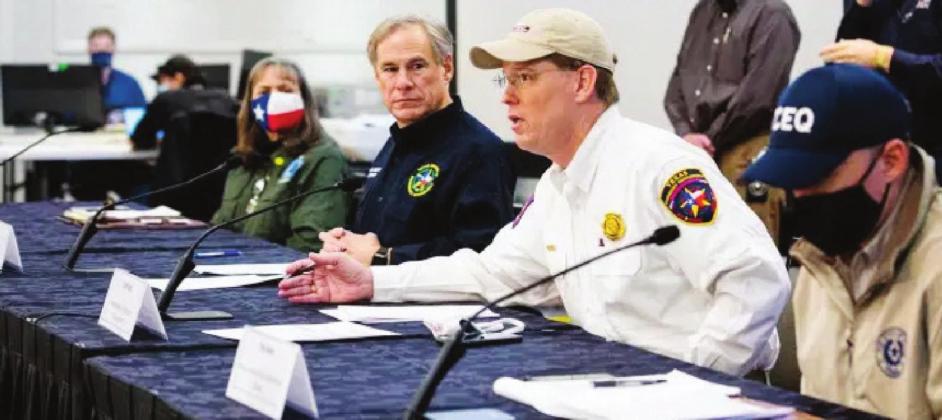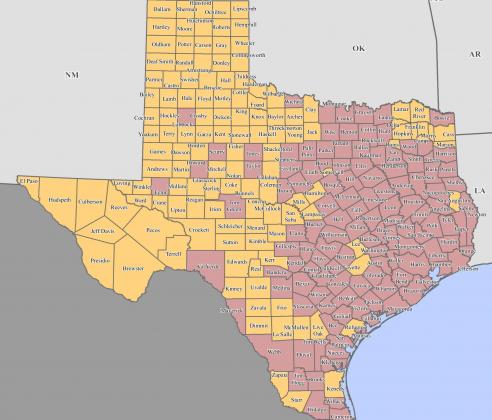Burnet and Llano County business owners, homeowners and renters now are eligible to apply for Individual Assistance from the Federal Emegency Management Agency (FEMA) if they suffered damage from Winter Storm Uri, which pummeled Texas last month.
The fastest way to apply for assistance is by registering online at disasterassistance.gov. During the application process please ensure to select the cause of damage as “snow/ice” amongst other damages that may have occurred.
If it is not possible to register online, call 800-621-3362 (TTY: 800-462-7585). The toll-free telephone lines operate from 6 a.m. to 10 p.m. Central Time, seven days a week. Those who use a relay service such as a videophone, Innocaption or CapTel should update FEMA with their specific number
Damage assessments can also be submitted by those without access to a computer by calling 844-844-3089. Damages must be submitted before assistance can be requested.
Applicants are required to inform FEMA of all insurance coverage such as flood, homeowners, renter’s, etc. that may be available to them. Insured applicants must provide FEMA documentation such as an insurance settlement or denial letter to process their application.
If you have insurance and are applying for disaster assistance, you must also file a claim with your insurance company as soon as possible. By law, FEMA cannot duplicate benefits for losses covered by insurance.
When you apply for assistance, have the following information readily available:
• A current phone number where you can be contacted;
• Your address at the time of the disaster and the address where you are now staying;
• Your Social Security number, if available;
• A general list of damage and losses; and
• If insured, the insurance policy number, or the agent and company name.
If it is safe to do so, start cleaning up now. Take photos to document damage and begin cleanup and repairs to prevent further damage. Remember to keep receipts from all purchases related to the cleanup and repair.
Disaster assistance may include financial assistance for temporary lodging and home repairs, low-interest loans to cover uninsured property losses, and other programs to help individuals and business owners recover from the effects of the disaster.
FEMA programs do not pay for fuel or cover food losses. If you have immediate needs for food or shelter, you may contact 2-1-1 for local resources.
Low-interest disaster loans from the U.S. Small Business Administration are available to businesses, homeowners and renters. Call the SBA at 1-800-659-2955 (TTY: 800-877-8339) or visit sba.gov/services/ disasteras sistance.
Texans also are urged to fill out the Texas Division of Emergency Management’s State of Texas Assessment Tool to help state and emergency management offi cials identify damages that occurred during the recent winter storm.
FEMA has asked the state of Texas for additional information regarding the amount of damage in the counties that have yet to be declared, and TDEM will continue to present that information until all Texas counties that qualify for federal assistance receive the assistance they need.
To date, $32,752,383.73 in total Housing Assistance has been approved, along with $3,132,080.60 in Other Needs Assistance for a total of $35,884,464.33 in Individual Assistance approved as of March 1. A total of 11,419 Individual Assistance Applications have been approved so far.
There have been no payouts yet of Public Assistance or Hazard Mitigation Assistance, according to FEMA.
Scam alert
Contrary to rumor, FEMA does not pay for energy bills for those affected by the Texas winter storm. FEMA aid is meant to help with items such as temporary rental, or home repair assistance. Other federal agencies may provide additional support and local charitable organizations may be able to help for a short period. Call your local United Way office or dial 2-1-1 to find out more.
FEMA also will not pay for insurance deductibles for disaster survivors. FEMA provides financial benefits to eligible applicants who are not insured or underinsured, but those benefits occur after an insurance settlement. FEMA can’t duplicate benefits from insurance or pay your deductible.
There also is a false phone number being shared on social media and text messages saying FEMA is paying for hotels in Texas due to the recent storm. This is a scam. FEMA also is not providing any direct food vouchers for disaster survivors.
The Texas Department of Insurance is warning people to be aware of potential contracting scams as they begin making repairs. They are operating a help line to prevent contractor scams at 800-252-3439.




